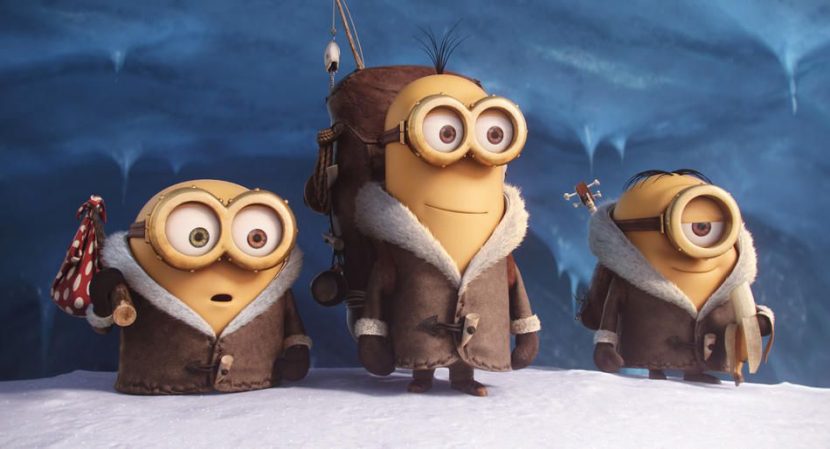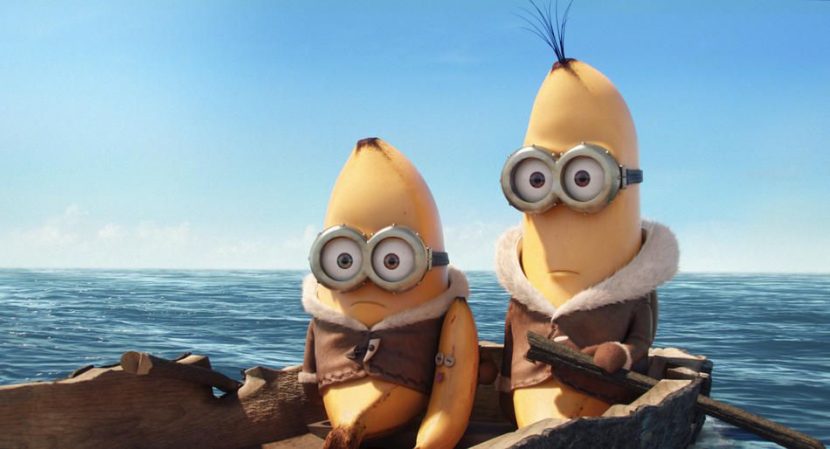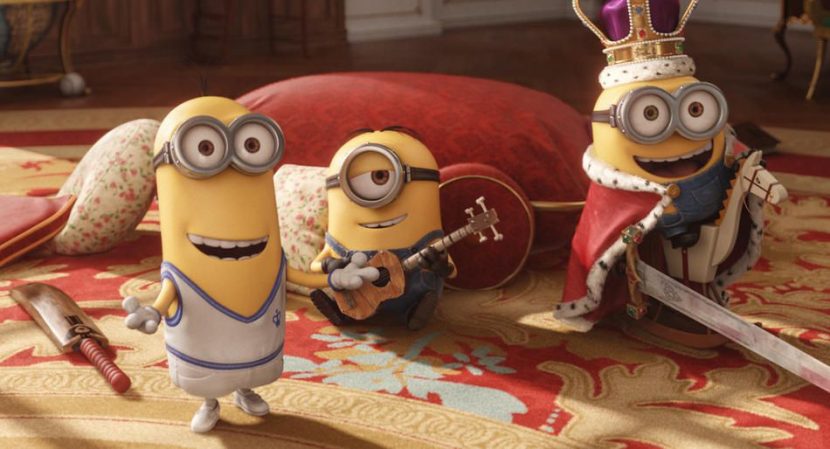When Despicable Me was released in 2010, audiences flocked to the film for a different ‘take’ on the animation genre. An unexpected hit in the movie, and its 2013 sequel, were the yellow henchmen known as the Minions. These characters were so popular, in fact, that they are now the stars of their own self-titled spin-off directed by Pierre Coffin and Kyle Balda, which in its first weekend at the US box office had a massive opening of around $120 million. fxguide spoke to animation director Pierre Leduc from Illumination Mac Guff about how the Minions are made.
fxg: Minions aren’t normal shapes, don’t speak normally and sometimes have just one eye – how challenging is it to animate a Minion?
Leduc: The trickiest part of the minion design, despite the lack of shoulders and neck, is that they have no eyebrows. It’s a real challenge to communicate emotions without eyebrows so we mostly used body language with clear posings and attitude to make sure the audience understand what’s happening. There are other limitations due to their unique design, for example their arms are to short so they cannot really scratch the top of their head or grab anything that is to high. But all those technicals limitations forced us to find solutions and helped us create the way they move.
fxg: How do you make their performance and behavior comical?
Leduc: It’s really a team work. We encourage every animator to suggest ideas to make the shots more appealing as long as it fits the behavior and the animation style of the minions. We think that if we laugh, there is a good chance that other people will laugh as well.
fxg: Did the animators look to any particular reference, or film their own reference, for certain scenes in the film?
Leduc: Most of the animators working on minions already worked on Despicable Me 1 or 2 so they know the minions pretty well. We mime a lot during the process and some animators film themselves but they really have to translate their human motion into minion motion. Otherwise it would look too realistic and the minions will loose the stiffness that gives them their specific behavior. I unfortunately cannot provide you with any video reference the animators made because they will hate me so very much for doing so.
fxg: How do you approach voice performance for the Minions?
Leduc: We have to be as clear as possible in our acting choices like in a silent movie. There isn’t any minion dictionary yet so we have our own minion translator in the person of Pierre Coffin who is doing the voices for the minions. As a director, he gives us the intentions for the shots and if we come with a new idea that would need some changes in the voice performance, he can provide a new sound quickly.
fxg: The Minions are always so ‘active’. Where do some of the vignettes of their performances come from? Do animators get to suggest little crazy things that they can do?
Leduc: Yes, as I explained before, we encourage and push the animators to come up with ideas. Those might not end up in the movie but it can help finding even better ideas. Our inspiration for the performances comes in many forms and it would be impossible to go through all of them but I won’t take any risk by saying that Chuck Jones cartoons are a big part of it.
fxg: When there are hordes of Minions, do you utilize any crowd simulation tools? How do you inject personality into the Minions for these crowd-type scenes?
Leduc: It’s all done by hand in keyframe. We have a crowd team within the animation team that does an amazing job. They use a library of basic walks, runs, cheering and they tweak it a lot to fit the intentions of the shots but most of the time they do it from scratch. As for the main animation, we push the animators to have fun and find little details that bring life to those crowd shots and if you look closely there’s almost always something happening in the background.
fxg: Can you talk about some of the typical tools that were used – from animation through to rendering?
Leduc: I can only speak for the animation part but we use the basic tools of Maya software. We have some tools that have been developed here like a pose library, animation library, also a tool that we use during the blocking process of animation, a caching tool to make the crowd shots lighter to work with and lots of littles things that have been added throughout time.
All images copyright 2015 Universal Pictures.



